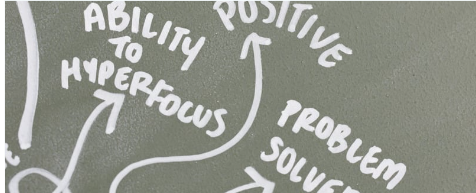What does it mean to have a psychologically healthier workplace? Don’t we all want to go to work with a feeling of positivity and excitement? Who doesn’t dream of waking up every day, excited to go to work?
A healthy workplace is the one where workers and managers actively contribute to the work environment by promoting and protecting the mental health, safety and wellbeing of the employees.
We all know that work, in any form, has a significant effect on our emotional and psychological well-being for better or for worse, in particular, the quality and psychological health of the workplace environment.
Creating a psychologically healthy workplace is not just the right thing to do for the employees but also the smart thing to do for an organization’s financial well-being and productivity. A small investment in psychologically healthy work practices can pay big dividends in years to come.
Studies show that organizations not only benefit from their psychologically healthy workplace practices, they also show that organizations can pay a very real price for inaction and inattention to such health practices.
According to a research:
- 45% of employees working for an employer complained of Anxiety or Depression against 30% of those who were self-employed.
- 44% of employees working full-time reported feelings of anxiety.
- 28% employees reported burnout with 48% feeling stressed due to task deadlines
This shows that a negative work environment can lead to a number of physical and mental health problems. This includes depression, anxiety, and substance abuse.
Toxic work environments have also been linked to insufficient sleep, increasing the risk of obesity, diabetes, and cardiovascular disease, and over the time it has also been associated with a shortened lifespan. Not to mention the economic impact that the poor mental health of its employees has on companies and organizations.
We spend (on average) half of our waking hours at work, and many business leaders are starting to acknowledge that inculcating these psychological techniques in the workplace is imperative. Not only might staff be more cordial and engaged in the space, but staff productivity may also increase.
FUN FACT
Did you know, our genes are responsible for about 50% of our happiness levels, our actions and attitudes account for 40% or our happiness?
So if our choices and attitudes have a significant
impact on our happiness, how do we cultivate and maintain a state of positivity and wellbeing in the workplace?
Over the last few years, organizations have started investing in taking care of the mental well-being of their employees by introducing Employee Assistance Programs.
An employee assistance program is an employee benefit program that assists employees with
personal problems and/or work-related problems that may impact their job performance, health,
mental and emotional well-being. Psychologists make use of different psychological techniques
to assist the employees for their well-being.
One such technique is implementing the PERMA model in the organization.
PERMA in the Workplace
Over the last 15 years, Positive Psychology, pioneered by Professor Martin Seligman has developed an evidence-based model for the active ingredients of wellbeing.
For short, his model is known as PERMA:
- Positive emotions
- Engagement
- Relationships
- Meaning
- Accomplishment
So how can the PERMA model be added to workplaces for the betterment of everyone?
- Positive emotions
People thrive when they are happier. When the mood becomes brighter, we set higher goals and
persist longer towards them. We experience less stress and fatigue and show better team cooperation and problem-solving.
This can be done in different ways, for example, give a shout out to an employee for their extra
efforts or maybe reward them with something for their dedication towards a project or for being an amazing team player. This culture of gratitude decreases stress levels and helps promote a better well-being.
- Engagement
According to research on happiness, our moods are literally contagious. This happens because of mirror neurons in our brains. If our colleague starts celebrating next to us, the cells in our own brain that would fire when we are engaged in similar behavior light up.
If you watch two staff-members give each other a spirited high-five and laugh, the mirror neurons in your brain will fire as if you were directly involved.
Helping your staff come together and connect by organizing team building events, encourages people to work together and build genuine relationships. This will help the employee to be confident and expressive which in turn will improve their mental health.
- Relationships
The formula for building staff engagement is to maximize the extent to which people are using and applying their strengths. Martin Seligman and other researchers have noted that when work demands our engagement, such as using our strengths in new and innovative ways, we experience higher levels of happiness and lower levels of depression.
- Meaning
In this context, meaning refers to a purposeful existence. In the work environment, when there is a shared sense of purpose, staff are more likely to feel satisfied with their job.
- Accomplishments
We all take pride in something we’ve done or accomplished. It is these accomplishments that
strengthen our self-esteem and our confidence that we are worth something. When we achieve something, we feel good and want to do more and become more.
When the PERMA Model is followed, there are higher chances of creating a happy workforce, which easily translates to a happy and productive workplace. Whether it is used by an individual as a tool for self-development or stress management or by a company to foster a positive working environment, the important thing is that each person’s contribution is acknowledged.
Implementing Employee Assistance Programs will lead to multiple benefits for employees and
for the organization. Such benefits are:
- Less Absenteeism
- Increased productivity
- Positive work environment
- Improved morale
- Improved work performance
The program will take time to become successful within the organization. But it is also an asset
that will help the employees deal with their everyday problems that will provide an opportunity to boost their morale and productivity. The workspace should be a place where every employee feels at home and look forward to being their best.
References:
- Seligman, M. (2002). Authentic Happiness: Using the New Positive Psychology to Realize Your Potential for Lasting Fulfillment.
- Seligman, M. E. P., Steen, T. Seligman (2011). Flourish: A visionary new understanding of happiness and well-being.
- Lyubomirsky, S., King, L., Diener, E. (2005). The benefits of frequent positive affect: Does happiness lead to success?
- Huppert, F. (2008) Psychological wellbeing: Evidence regarding its causes and consequences.
- McQuaid, M., & Kern, M. (2017) your well-being blueprint: Feeling good and doing well at work
- Quinn, A. (2018, February 3). Theory of well-being: Elements and interventions. Good Therapy Blog.
About the Author:
 As an organizational psychologist, Tanvi specializes in developing competency-based assessments and employee engagement programs. Postgraduate in Industrial and Organizational Psychology, she works with a company that provides HR Technology Solutions. Her passion for the human mind and her optimism make her a wonderful person to know. Along with her professional dance career, she also aspires to become a digital marketer. She lives by the quote “Believe in yourself. You are braver than you think, more talented than you know, and capable of more than you imagine.”
As an organizational psychologist, Tanvi specializes in developing competency-based assessments and employee engagement programs. Postgraduate in Industrial and Organizational Psychology, she works with a company that provides HR Technology Solutions. Her passion for the human mind and her optimism make her a wonderful person to know. Along with her professional dance career, she also aspires to become a digital marketer. She lives by the quote “Believe in yourself. You are braver than you think, more talented than you know, and capable of more than you imagine.”

